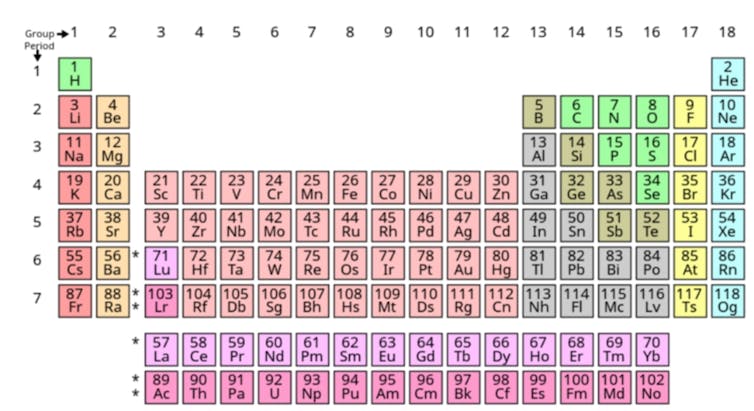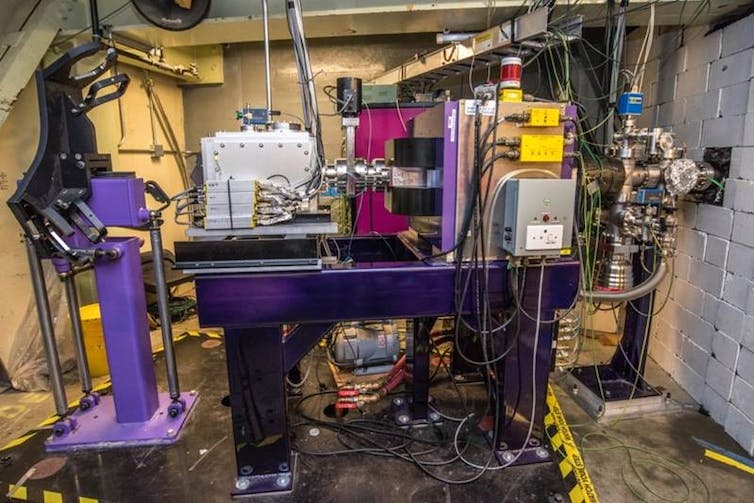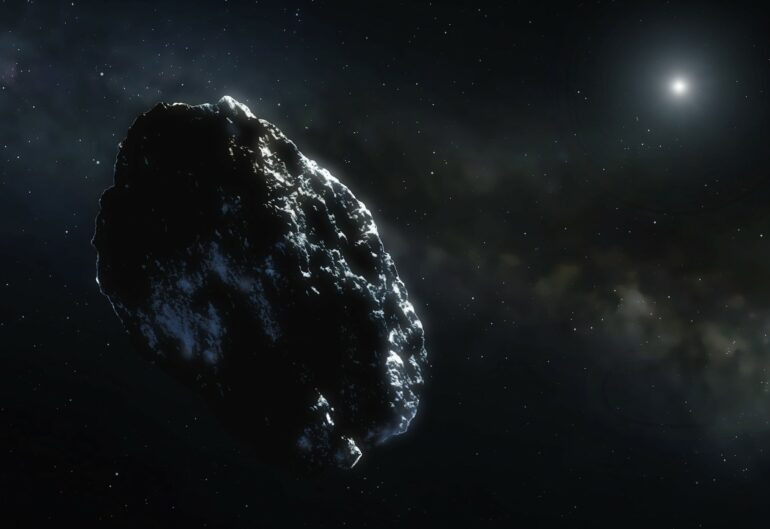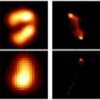For centuries, the quest for new elements was a driving force in many scientific disciplines. Understanding an atom’s structure and the development of nuclear science allowed scientists to accomplish the old goal of alchemists – turning one element into another.
Over the past few decades, scientists in the United States, Germany and Russia have figured out how to use special tools to combine two atomic nuclei and create new, superheavy elements.

The heaviest element on the periodic table has 118 protons.
Licks-rocks/Wikimedia Commons, CC BY-SA
These heavy elements usually aren’t stable. Heavier elements have more protons, or positively charged particles in the nucleus; some that scientists have created have up to 118. With that many protons, the electromagnetic repulsive forces between protons in the atomic nuclei overwhelm the attractive nuclear force that keeps the nucleus together.
Scientists have predicted for a long time that elements with around 164 protons could have a relatively long half-life, or even be stable. They call this the “island of stability” – here, the attractive nuclear force is strong enough to balance out any electromagnetic repulsion.

Scientists at Lawrence Berkeley National Laboratory have constructed experiments that can weigh superheavy elements.
Marilyn Chung, Lawrence Berkeley National Laboratory
Since heavy elements are difficult to make in the lab, physicists like me have been looking for them elements everywhere, even beyond the Earth. To narrow down the search, we need to know what sort of natural processes could produce these elements. We also need to know what properties they have, like their mass densities.
Calculating density
From the outset, my team wanted to figure out the mass density of these superheavy elements. This property could tell us more about how the atomic nuclei of these elements behave. And once we had an idea about their density, we could get a better sense of where these elements might be hiding.
To figure out the mass density and other chemical properties of these elements, my research team used a model that represents an atom of each of these heavy elements as a single, charged cloud. This model works well for large atoms, particularly metals that are laid out in a lattice structure.
We first applied this model to atoms with known densities and calculated their chemical properties. Once we knew it worked, we used the model to calculate the density of elements with 164 protons, and other elements in this island of stability.
Based on our calculations, we expect stable metals with atomic numbers around 164 to have densities between 36 to 68 g/cm3 (21 to 39 oz/in3). However, in our calculations, we used a conservative assumption about the mass of atomic nuclei. It’s possible that the actual range is up to 40% higher.
Asteroids and heavy elements
Many scientists believe…



